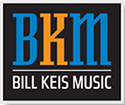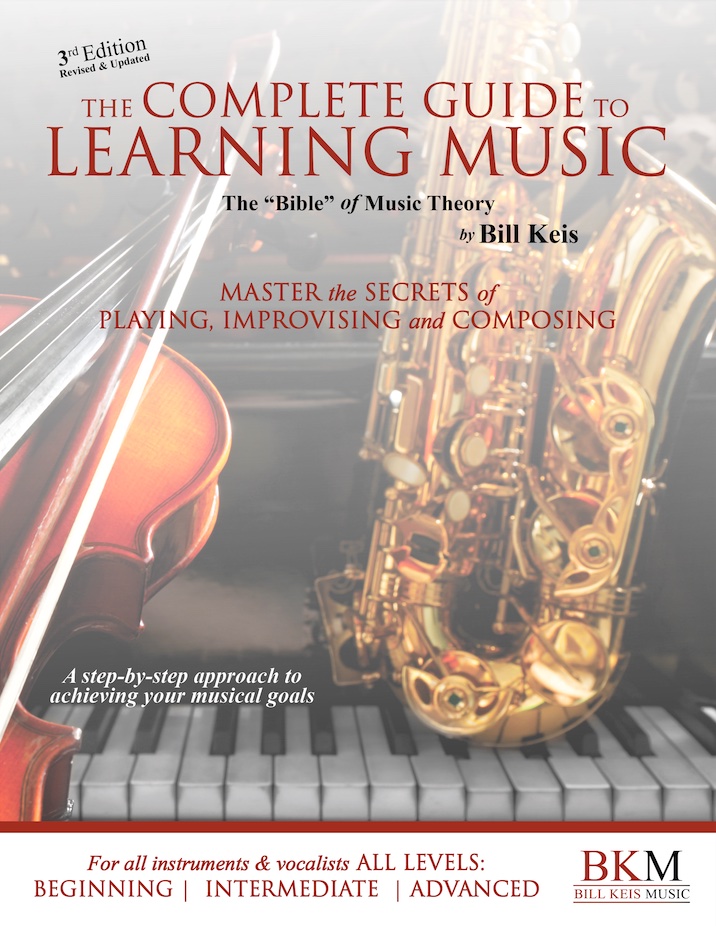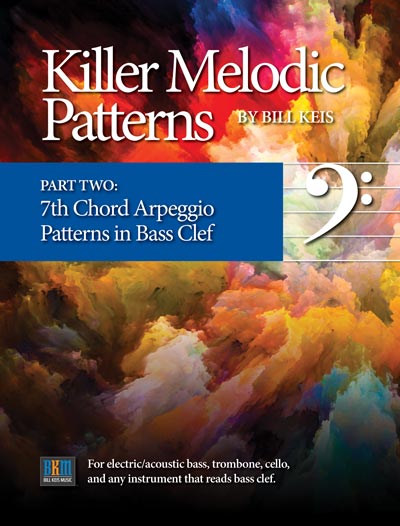The Complete Guide to
Learning Music
SERIES: Killer Melodic Patterns
SERIES: Learning Music
Why I Wrote “The Complete
Guide to Learning Music”
Music theory textbooks and technique exercises for beginner, intermediate and advanced musicians.
Learn the essentials without the complexities.
Powerful reference guides for anyone studying or teaching music.
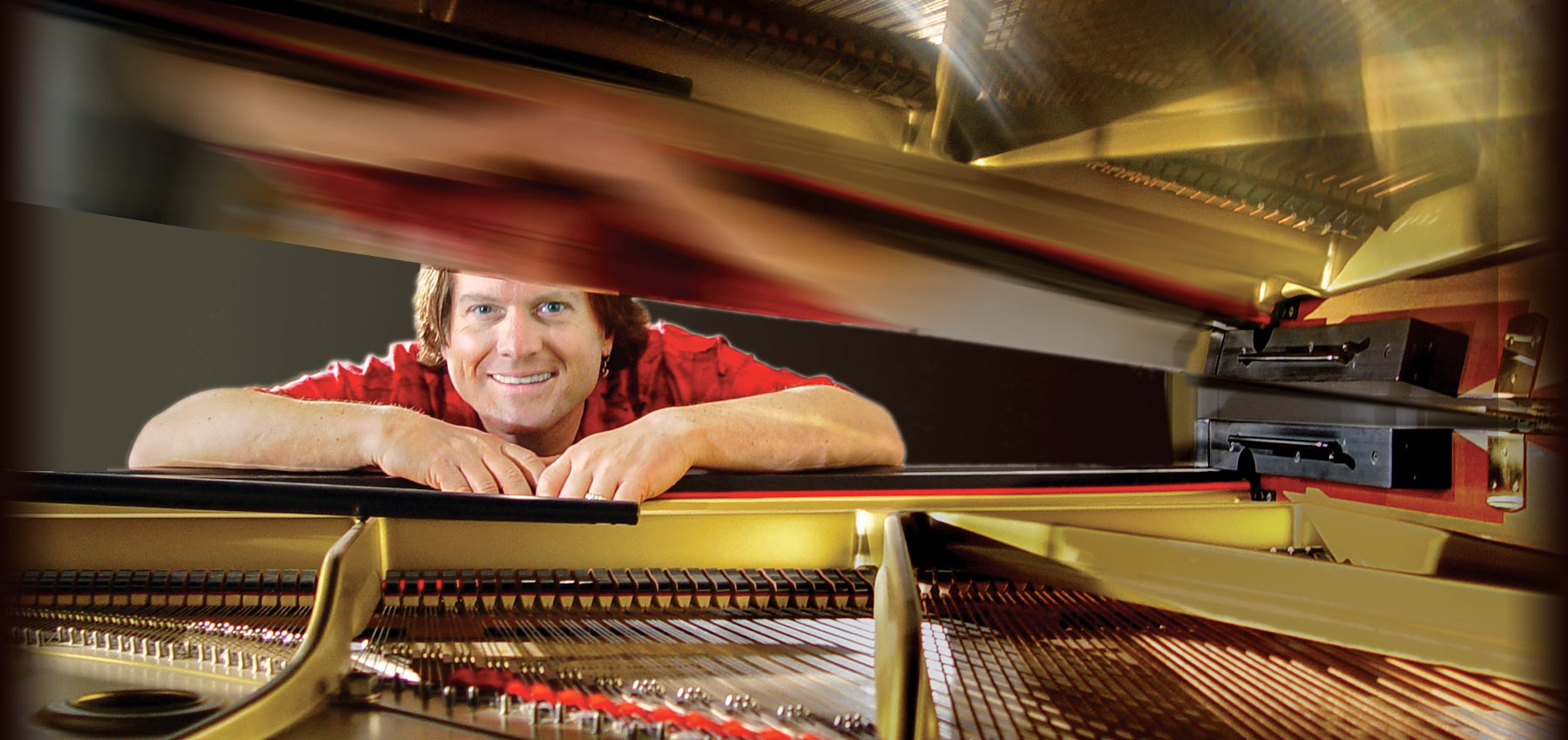
About the Author
Bill Keis is a professional musician, teacher, author, pianist, composer, producer and musical director in the Los Angeles area. He has performed with such notable and talented musicians and composers as Chick Corea, Mark Isham, David Campbell, Stanley Clarke, Ronnie Spector, Edgar Winter, Chaka Khan and Kate Ceberano.
One of Bill’s compositions was used in the 2015 blockbuster movie, “Avengers: Age of Ultron”, which grossed over $1.4 billion worldwide.
“The Complete Guide to Learning Music”
by Bill Keis
Master the Secrets of Playing, Improvising, and Composing for All Instruments
This 539-page book applies to any musician at any level of expertise regardless of instrument or style of music. It is invaluable as a reference book for private lessons or as a textbook for classroom study, and It includes and a large glossary!
PART ONE – THE BASICS
• What is music? The three basic elements of sound.
• How to cure Tone Deafness. Can Perfect Pitch be learned?
PART TWO – ESSENTIAL THEORY
• Major & minor scales & arpeggios, Secrets of Improvisation part 1
• Reading Music, Pentatonic & Blues Scales
PART THREE – RHYTHM
• Theory, Secrets of Improvisation part 2, 17 Rhythm Reading Drills
• Rhythm Section, Grooves, Comping
PART FOUR – BASIC HARMONY
• Intervals, triads, inversions, I, IV, V chords and the 12 Bar Blues
• Diatonic triads, progressions and arpeggio patterns
PART FIVE – INTERMEDIATE HARMONY
• 7th Chords, Inversions, arpeggio patterns, Harmonic rhythm
• 12 Bar Blues with 7th chords, Diatonic 7th Chords, Rhythm Changes
• Secrets of Improvisation part 3 & 4 (basics of chord-scale theory)
PART SIX – ADVANCED SCALES & HARMONY
• History of scales, 28 Diatonic modes, Non-diatonic scales
• Types of harmony, extended chords (9th, 11th, 13th), slash chords
• 31 13th Chords defined, Chord-scale chart, more Rhythm Changes
• Secrets of Improvisation part 5, Intros, Turnarounds, II, V, I all keys
PART SEVEN – IMPROVISATION & COMPOSITION
• Basics of composition, song form, melodic phrasing
• Styles of music, Harmonic progressions, substitute chords
• The Chord Progression Encyclopedia
PART EIGHT – PIANO & KEYBOARD PLAYERS ONLY
• Technique, fingerings, chord voicing, solo piano, walking bass lines
PART NINE – MUSICIAN’S HAT
PART TEN – GLOSSARY of Musical Terms and Symbols
PART ELEVEN – APPENDIX
• Practice Guidelines, How to: practice songs, memorize, learn songs by ear, play in band, play Theme & Variation Improvisation
• About the author
Testimonials for “The Complete Guide to Learning Music”
 “As far as I am concerned, The Complete Guide to Learning Music is the bible of music theory, including the REAL theory behind composition. There’s information in this book that you can’t find anywhere else. I can’t rave to you enough about it! I feel indebted to [Bill] for writing it. As a result, my composition statistics have gone into affluence. Music theory is plagued with mountains of false and confusing data. Bill’s book clears those up completely!”
“As far as I am concerned, The Complete Guide to Learning Music is the bible of music theory, including the REAL theory behind composition. There’s information in this book that you can’t find anywhere else. I can’t rave to you enough about it! I feel indebted to [Bill] for writing it. As a result, my composition statistics have gone into affluence. Music theory is plagued with mountains of false and confusing data. Bill’s book clears those up completely!”
— Bill Wagner guitarist, composer
“This is a must for the library of anyone studying music. It is a clear, concise, instructive, great study guide. One could not ask for more from a text.” — G.W .
“I was frustrated with the usual textbooks, as they were not giving all the data or sometimes even false or confusing data. Yours is very easy to understand and has all the definitions needed.” — N.A.
“What a great book. It has the basics to the very advanced. It is easy to understand. This is a book that is much needed out there. This book has something for everyone!” — M.W.
“With his excellent book, Bill helped me to get my hands around funk, jazz, and dance music chord progressions that had always eluded me.” — J.W.
 “As a professional musician who is sometimes burdened with the idea that ‘I know too much to explain music to anyone!’, I enthusiastically endorse this book! It is expertly presented to ensure a pleasurable and productive experience for any reader!”
“As a professional musician who is sometimes burdened with the idea that ‘I know too much to explain music to anyone!’, I enthusiastically endorse this book! It is expertly presented to ensure a pleasurable and productive experience for any reader!”
—Mark Isham, Grammy Award-winning, Academy Award-nominated composer
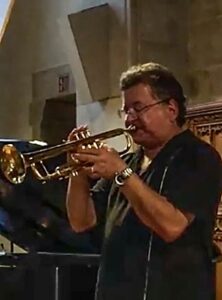 “I like the way you explain things in the book. Right on the money. The basics are covered in a precise, but friendly way. I will use the book to help me teach, but also to improve. I’m going through the basics to check my foundation. Later there’s some advanced stuff I don’t know and things to get more certain.”—Ron Ruvio, Chicago trumpet player, composer and arranger
“I like the way you explain things in the book. Right on the money. The basics are covered in a precise, but friendly way. I will use the book to help me teach, but also to improve. I’m going through the basics to check my foundation. Later there’s some advanced stuff I don’t know and things to get more certain.”—Ron Ruvio, Chicago trumpet player, composer and arranger
“It was a revelation…his ability to demystify the theory behind the harmony and make it easy to understand.” —R.R.
“After decades of robotically learning these scales, I’ve now cleared up the confusions. It’s wonderful!” —U.D.
“I got the book. It’s awesome! It’s just what I need. You did an incredible job.” —F.B.
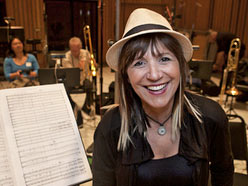 “The most comprehensive and easily assimilate book on music theory that I have come across in my 30 years as a musician and vocalist.”
“The most comprehensive and easily assimilate book on music theory that I have come across in my 30 years as a musician and vocalist.”
—Raven Kane, composer, lyricist
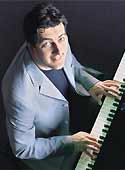 “As the musical director for Mad Hatter Studios in Los Angeles, I was looking for educational materials for helping to teach musicians. Since I’m a classical trained pianist and composer, I’ve studied many music books. I have been using this book and I think it is great! It is used as a reference by other people here also, when specific music concepts or data need to be learned. I can definitely recommend it!”
“As the musical director for Mad Hatter Studios in Los Angeles, I was looking for educational materials for helping to teach musicians. Since I’m a classical trained pianist and composer, I’ve studied many music books. I have been using this book and I think it is great! It is used as a reference by other people here also, when specific music concepts or data need to be learned. I can definitely recommend it!”
—Emanuele Ruffinengo, Musical Director at Mad Hatter Studios, Grammy winner; co-producer of Chick Corea’s album “To The Stars.”
“I’m a singer, composer and band leader. I need a book like this to understand things I’m missing.” —A.J.
“The definitions are very clean and straightforward.” —S.W.
“I was failing my college music class; your book totally cleared up my confusions. I got an A on my test!” —C.L.
"Killer Medodic Patterns" Series by Bill Keis
“Killer Melodic Patterns” will increase your ability to play, improvise and compose melodies. Studying these books will increase your technique, improve your sight-reading, give you new ideas for melodies, bass lines, etc., and increase your facility in all keys
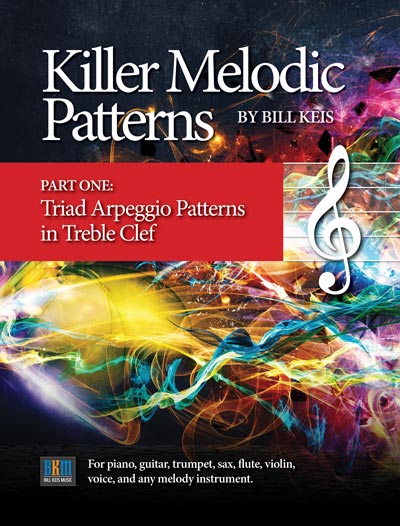
Killer Melodic Patterns (triad arpeggio patterns in treble clef)
PART ONE: Triad Arpeggio Patterns in Treble Clef
For piano, guitar, trumpet, sax, flute, violin, voice and any melody instrument.
This book contains six triad arpeggio patterns notated in all 12 keys. Each pattern plays up and down all the diatonic triads in each inversion from four different scales. There are a total of 864 separate drills. The 4 scales are: major scale, melodic minor scale, harmonic minor scale and harmonic major scale.
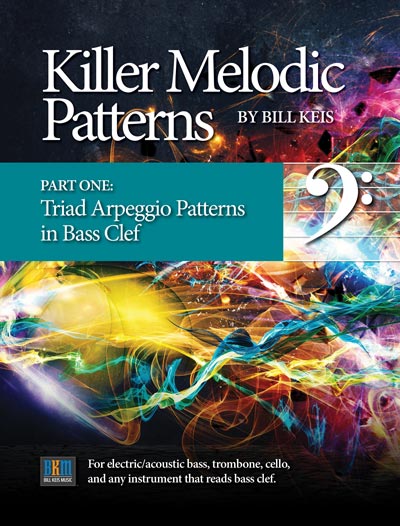
Killer Melodic Patterns (triad arpeggio patterns in bass clef)
PART ONE: Triad Arpeggio Patterns in Bass Clef
For piano, guitar, trumpet, sax, flute, violin, voice and any melody instrument.
This book contains six triad arpeggio patterns notated in all 12 keys. Each pattern plays up and down all the diatonic triads in each inversion from four different scales. There are a total of 864 separate drills. The 4 scales are: major scale, melodic minor scale, harmonic minor scale and harmonic major scale.
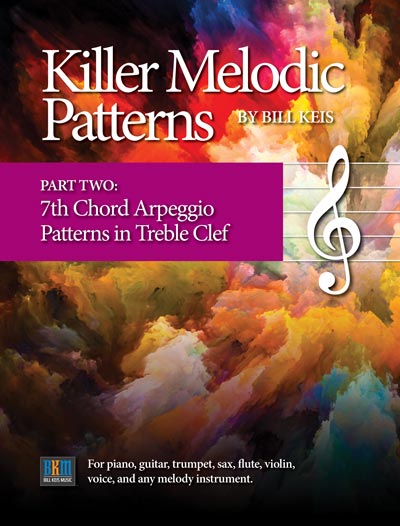
Killer Melodic Patterns (7th chord arpeggio patterns in treble clef)
PART TWO: 7th Chord Arpeggio Patterns in Treble Clef
For piano, guitar, trumpet, sax, flute, violin, voice and any melody instrument.
This book contains eight 7th Chord Arpeggio Patterns notated in all 12 keys. Each pattern plays up and down all the diatonic 7th Chords in each inversion from four different scales. There are a total of 1,536 separate drills. The 4 scales are: major, melodic minor, harmonic minor, harmonic major.
Killer Melodic Patterns (7th chord arpeggio patterns in bass clef)
PART TWO: 7th Chord Arpeggio Patterns in Bass Clef
For electric/acoustic bass, trombone, cello, any instrument that reads bass clef.
This book contains eight 7th Chord Arpeggio Patterns notated in all 12 keys. Each pattern plays up and down all the diatonic 7th Chords in each inversion from four different scales. There are a total of 1,536 separate drills. The 4 scales are: major, melodic minor, harmonic minor, harmonic major.
"Learning Music" Series by Bill Keis
The “Learning Music” series books were created by breaking down “The Complete Guide To Learning Music” into ten sections. Because some students don’t need or want the “big” book, I wrote these smaller books.
If you have “The Complete Guide To Learning Music”, you don’t need any of these books.
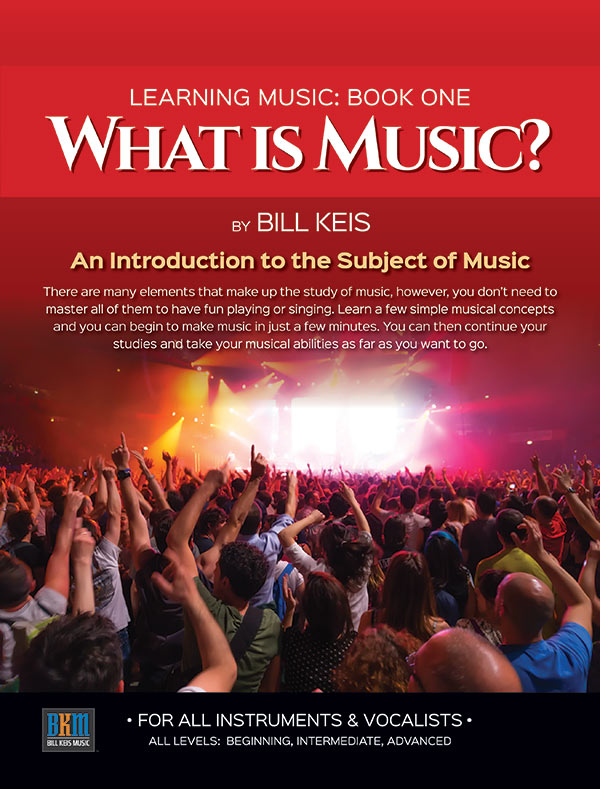
Paperback: 90 pages
Product Dimensions: 8.5 x 11 inches
Cost: $5.38
ISBN-13: 978-1542371940
ISBN-10: 1542371945
Book 1: What is Music?
An Introduction to the Subject of Music
Music is a language which can express virtually unlimited concepts and emotions. If you want to “make music”, there are definite things that need to be learned. However, you don’t need to master all of them to have fun making music. As a matter of fact, you can learn a couple simple things and begin to make music in a few minutes. Then, depending on how far you want to take it, you can continue to learn more.
This book answers many questions:
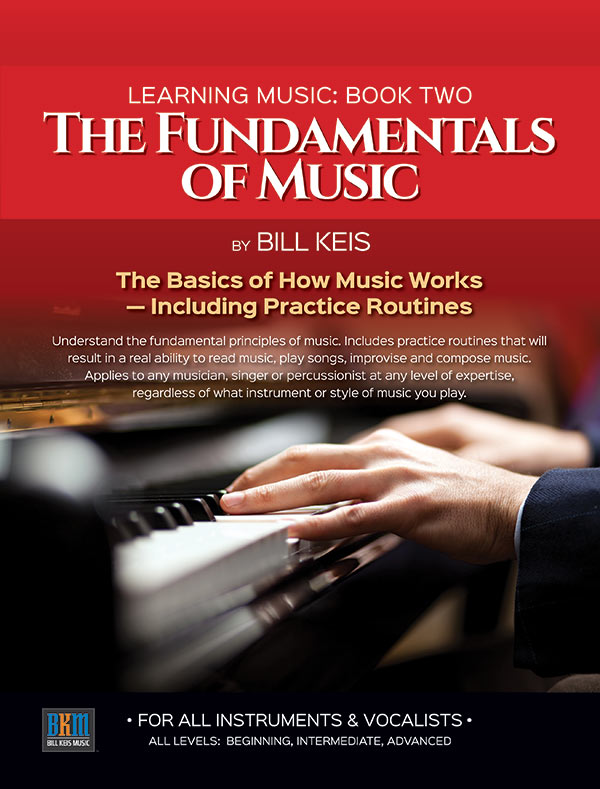
Paperback: 112 pages
Product Dimensions: 8.5 x 11 inches
Cost: $9.99
ISBN-13: 978-1542371902
ISBN-10: 1542371902
Book 2: The Fundamentals of Music
The Basics of How Music Works — Including Practice Routines
This book covers the fundamentals of music. If you want to “make music”, there are definite things that need to be learned. There are many books on the subject of music. What makes this book different? The data is presented in a simple, straightforward and concise manner along with practice routines that will result in real ability to read music, play songs, improvise and compose!
This book applies to any musician at any level of expertise regardless of what instrument or style of music he/she plays. It is invaluable as a reference book for private lessons or as a textbook for classroom study.
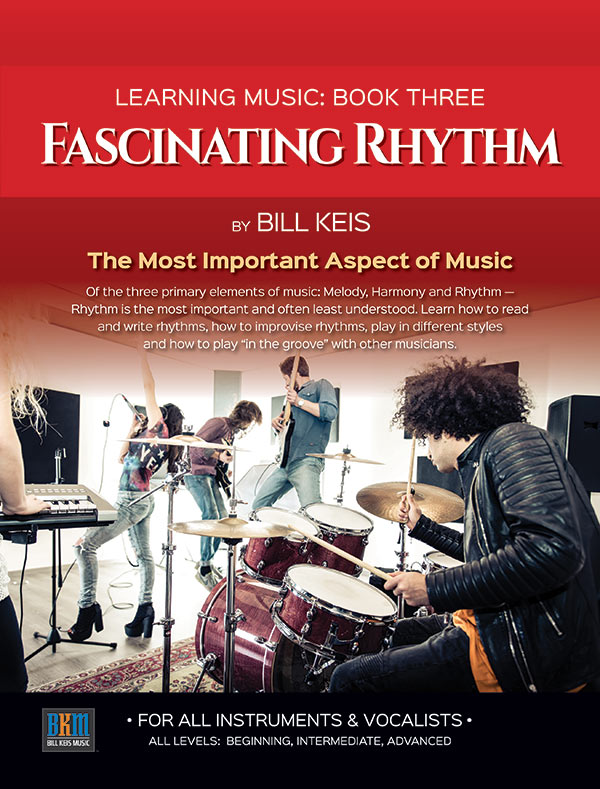
Paperback: 90 pages
Product Dimensions: 8.5 x 11 inches
Cost: $5.38
ISBN-13: 978-1542371940
ISBN-10: 1542371945
Book 3: Fascinating Rhythm
The Most Important Aspect of Music
Which of the three elements of music: melody, harmony and rhythm do you think is the most important? That’s a good question. My answer is rhythm. That’s why I called it “Fascinating Rhythm”. After studying this book, you might agree with me.
In this book, you will learn how to read & write rhythms, how to improvise rhythms, play in different styles, but most important… how to play in the pocket!
The data in this book applies to any musician at any level of expertise regardless of what instrument or style of music he/she plays. This is invaluable as a reference book for private lessons or as a textbook for classroom study.
This book answers many interesting questions such as:
- Is it true that some people have rhythm and some don’t?
- What is time, beats, bars, downbeats, backbeats, rhythmic feel?
- What is the importance of a metronome?
- How does one learn to keep time?
- What are the common time signatures?
- How fast should you be able to play or read music?
- What are the three main rhythmic feels and how do they relate to styles?
- What is the difference between grooving and comping?
- How do you play in or with a rhythm section?
- How can I learn to improvise in any rhythm?
- What are Polyrhythms?
- What are odd meters?
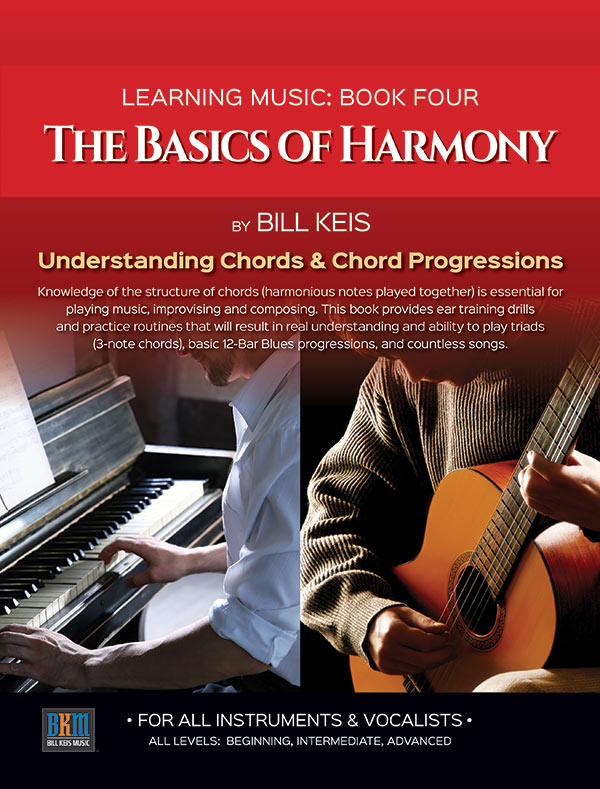
Paperback: 54 pages
Product Dimensions: 8.5 x 11 inches
Cost: $8.99
ISBN-13: 978-1542371971
ISBN-10: 154237197X
Book 4: The Basics of Harmony
Understanding Chords and Chord Progressions
This book covers the basics of harmony. If you want to “make music”, there are definite things that need to be learned. There are many books on the subject of music. What makes this book different?
Knowledge of Harmony is very useful for improvising and composing. The material in this book is presented in a simple, straightforward and concise manner along with practice routines and ear training drills that will result in real ability to play different chord progressions in songs, improvise and compose!
The data in this book applies to any musician at any level of expertise regardless of what instrument or style of music he/she plays. This is invaluable as a reference book for private lessons or as a textbook for classroom study.
This book answers many interesting questions such as:
- What are the 13 basic intervals?
- Why are they important?
- What is a chord? What is a chord inversion?
- What are the six basic chords and how are they built?
- Why are there several different chord symbols for the same chord?
- What is the advantage of using Roman numerals for chords?
- What is voice leading?
- How do you arrange notes when for background vocals, strings & horns?
- What is the 12 Bar Blues progression and why is it important?
- How to write chords for a melody?
- What are Diatonic chords?
- Why are they so important?
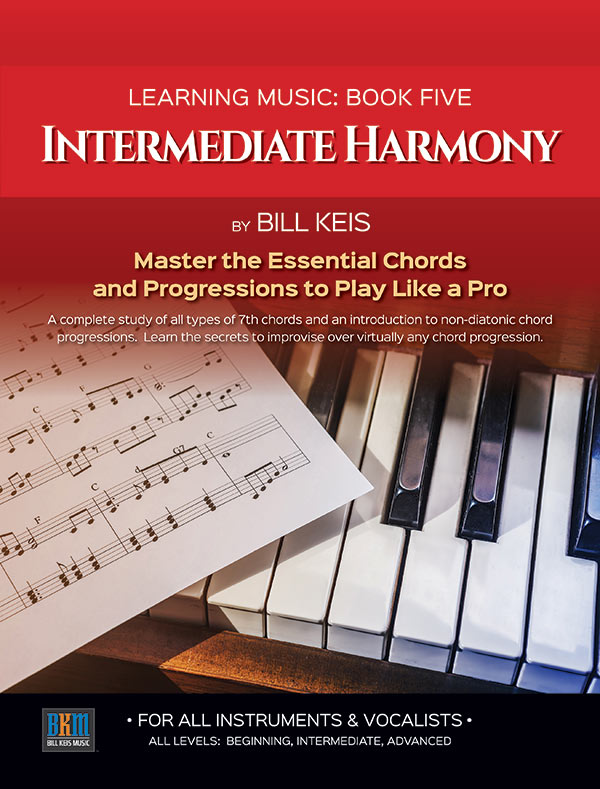
Paperback: 48 pages
Product Dimensions: 8.5 x 11 inches
Cost: $9.99
ISBN-13: 978-1542372022
ISBN-10: 154237202X
Book 5: Intermediate Harmony
Master the Essential Chords and Progressions to Play Like a Pro
The data in this book applies to any musician at any level of expertise regardless of what instrument or style of music he/she plays. This is invaluable as a reference book for private lessons or as a textbook for classroom study.
This book answers many interesting questions such as:
- Why are 4 note chords called 7th chords?
- What are the eight types of 7th chords?
- Did you know there are up to 5 different chord symbols for each 7th chord?
- What are the Diatonic 7th chords?
- Why are they important?
- How do you decide when to play a 7th chord instead of a triad?
- What are the three different blues scales?
- What type of 7th chord is the most common in blues?
- Why do many people fail in their attempt to learn to improvise?
- How can I learn to improvise over difficult chord changes?
- What are the most common intros, turnarounds & endings to songs?
- What are Rhythm Changes and why are they important?
- And many more!
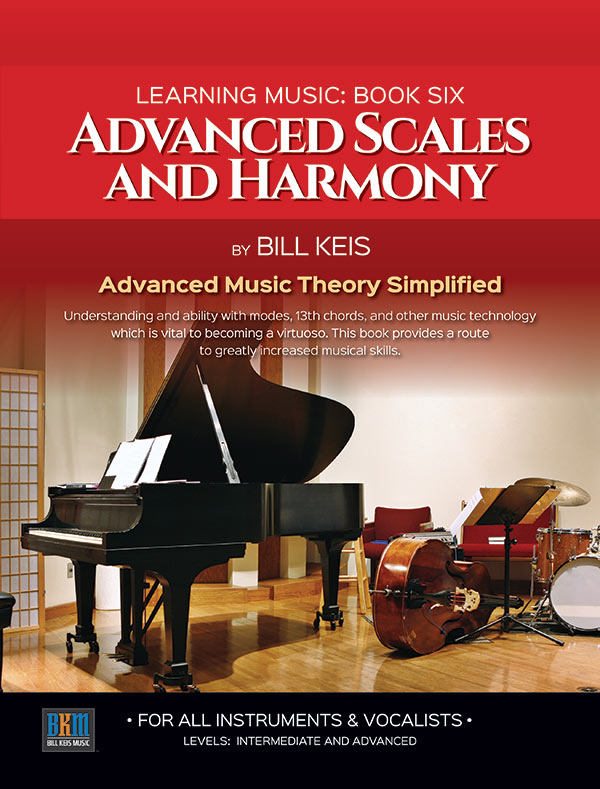
Paperback: 56 pages
Product Dimensions: 8.5 x 11 inches
Cost: $15.99
ISBN-13: 978-1542372060
ISBN-10: 1542372062
Book 6: Advanced Scales and Harmony
Advanced Music Theory Simplified
The purpose of this book is to clarify and thereby simplify advanced music theory and to offer a comprehensive reference. Additionally, this book provides a route to greatly increased musical skills, for those who wish to invest the time.
I’ve had various dealings with thousands of musicians. Some as students, some as peers, some as employers, and some were fans, etc. I can safely say that only a very small percentage of them had a good grasp of advanced music theory.
However, many of these musicians were incredible artists who had very successful careers. So the question is: Is understanding advanced theory important?
An analogy is driving a car. You don’t have to understand everything about how cars are built or how to repair them to successfully drive one. However, if you did study cars more in depth, your interaction with them would probably be enhanced.
Additionally, if you have been exposed to any of this material before and have some misunderstandings, you will want to clear those up, because those questions can impede your music making.
The data in this book applies to any musician at any level of expertise regardless of what instrument or style of music he/she plays. (Except drummers) This is invaluable as a reference book for private lessons or as a textbook for classroom study.
This book answers many interesting questions such as:
- Is ‘theory for the sake of theory’ a good idea?
- Why has Music theory has gotten a bad reputation?
- What are the 4 reasons some musicians think it will stifle their creativity?
- What are the 44 different types of scales?
- Which scale goes with which chord?
- What are extended chords, slash chords and poly-chords?
- What notes are in the 31 13th chords?
- Why are many scales and chords considered ambiguous?
- What is more important than the technical side of improvisation?
- How does one become a monster (slang – a master musician, a virtuoso)?
- What are the two 12 bar progressions that if mastered in all keys, will provide an excellent foundation?
- And many more!
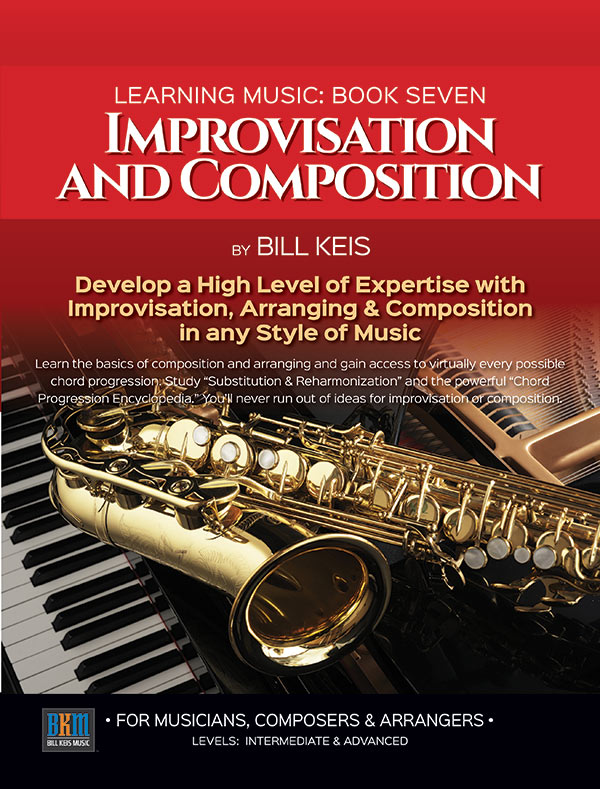
Paperback: 72 pages
Product Dimensions: 8.5 x 11 inches
Cost: $12.99
ISBN-13: 978-1542372077
ISBN-10: 1542372070
Book 7: Improvisation and Composition
Develop a High Level of Expertise with Improvisation, Arranging and Composition in Any Style of Music
The purpose of this book is to cover the basics of composition and arranging, as well as provide access to virtually every possible chord progression that exists which could result in mastery of Improvisation and Composition.
Music can come to you from inspiration; however professionals can’t wait for that. With this data, you will never run out of ideas for improvisation or composition.
The data in this book applies to musicians who want to develop a high level of expertise with improvisation, arranging and composition in any style of music. Invaluable as a reference book for private lessons or as a textbook for classroom study.
This book answers many interesting questions such as:
- What are the basics of composition?
- What are the various methods of composing?
- What are the important parts of a song or composition?
- What is the form of a jazz standard, a pop song, a Latin Rock tune, etc.?
- What are melodic phrases?
- What is the relationship between melody & harmony?
- How do you know when you are done writing a song?
- What are the main elements of any style of music?
- How to write in any style?
- What are the 4 types of motions of harmony?
- What is the difference between chord substitution and reharmonization?
- How to never run out of ideas for chord progressions?
- How to improvise over any chord progression?
- And many more!
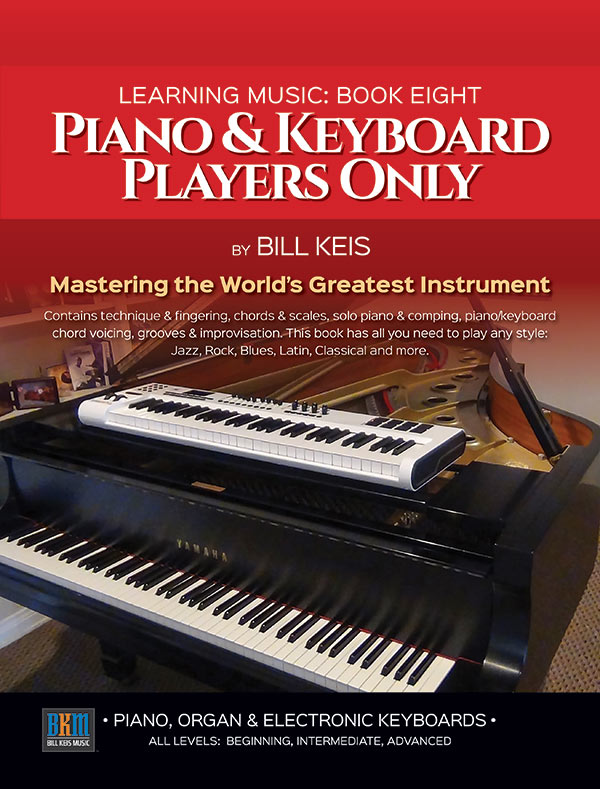
Paperback: 124 pages
Product Dimensions: 8.5 x 11 inches
Cost: $12.99
ISBN-13: 978-1542372114
ISBN-10: 1542372119
Book 8: Piano & Keyboard Players Only
Mastering the World’s Greatest Instrument
The piano is world’s greatest instrument! Can you tell I’m a piano player? OK, I might be slightly biased. However, it is true that the piano is the most versatile acoustic instrument. And aside from perhaps the synthesizer or pipe organ, the piano has a larger range of pitch than any other instrument. Certainly it produces all aspects of music like no other: melody, harmony, and rhythm.
My estimate is that approximately 70% of knowledge about music applies to any instrument. The other 30% applies to whatever instrument you’re playing.
This book covers most of the 30% that is needed to play the piano and much of that applies to any keyboard. The rest of the 70% of knowledge about music is covered in the other books.
The data in this book applies to any piano or keyboard player at any level of expertise regardless of what style of music he/she plays. This is invaluable as a reference book for private lessons or as a textbook for classroom study.
This book answers many interesting questions such as:
- What is piano technique? What is the “optimum playing position”?
- What are the 8 ways to attack (how to push the keys down)?
- What are the correct fingerings for scales, arpeggios & chord inversions?
- When playing a song, is there really no such thing as a “wrong” fingering?
- What are guidelines and methods of developing “good” fingering?
- What are triads, 7th, 9th, 11th, 13th chords?
- What are the 3 main ways to play the piano?
- What are all the possible piano chord voicings?
- How to develop hand independence?
- How to play in a rhythm section?
- How to play solo piano?
- How to play walking bass? Why should a piano player know that?
- What is the art of an accompanist?
- And many more!
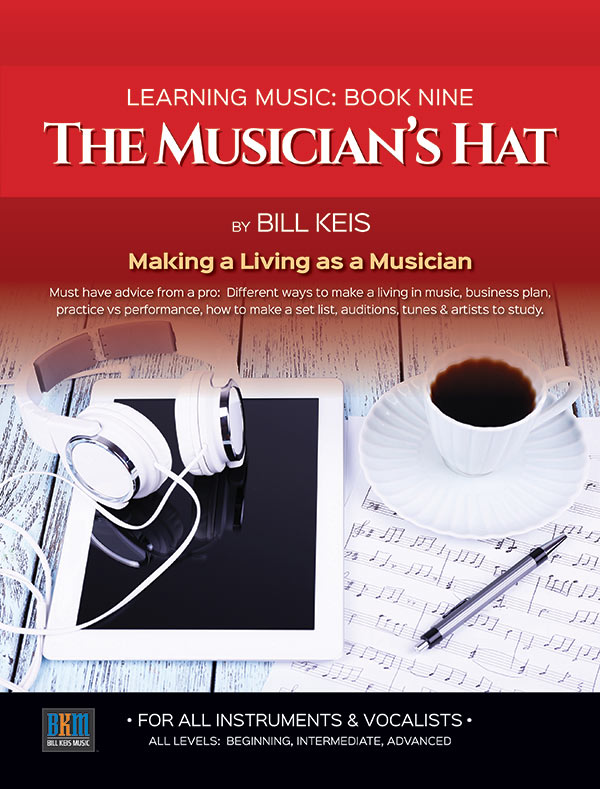
Paperback: 32 pages
Product Dimensions: 8.5 x 11 inches
Cost: $5.38
ISBN-13: 978-1542372145
ISBN-10: 1542372143
Book 9: The Musician’s Hat
Making a Living as a Musician
Hat = A position, job or zone of responsibility.
The basic job of a musician is to make music. That goes without saying. What may not be obvious to the non-musician is the huge number of different ways one can make a living in the field of music.
This book is for those who might be considering a career in music but are not sure if they could make a living at it, as well as for those people that are musicians. Believe it or not, music is a viable career.
This book answers many interesting questions such as:
- What are the 4 stages of music production?
- Can you name 13 or more different musician jobs?
- What is the daily activity of a musician?
- What are the 4 vital steps in a musician’s business plan?
- What is the difference between practice and performance?
- How to make a set list?
- How to prepare for an audition?
- What are the important tunes for a working musician?
- Who are the most important artists to listen to?
- And many more!
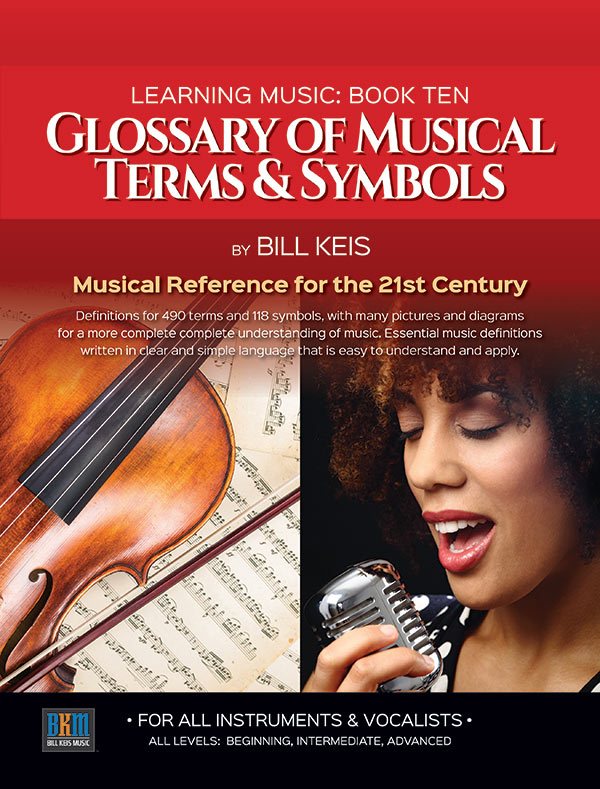
Paperback: 90 pages
Product Dimensions: 8.5 x 11 inches
Cost: $5.38
ISBN-13: 978-1542371940
ISBN-10: 1542371945
Book 10: Glossary of Musical Terms & Symbols
Musical Reference for the 21st Century
Definitions for 490 entries and 118 symbols and many pictures and diagrams.
There are countless music dictionaries and glossaries available that fulfill various needs. What makes this one different?
This book has workable definitions for the most essential music terms and symbols written in a clear, concise manner that are easy to understand and apply.
This glossary will no doubt be of great benefit to you in your study of music.
Why I wrote “The Complete Guide to Learning Music”
I like to help people. I’ve been teaching music since I was in high school. I came from a family of music teachers, my mother & father and three of my grandparents.
One day in 2006, I realized I had acquired a huge amount of knowledge about music and I came to the conclusion that I needed to take responsibility for that by writing a book which would help others achieve this knowledge.
As a working musician and teacher, I was frustrated with the complexity and difficult learning curve of music instruction books available to the general public. In my formative years, I studied many music theory books. Although they contained important data about improvisation and composition, etc., they were often written in an over-complex way.
These books would include non-essential data and weren’t organized in a logical sequence. For example, a book would mention an important term on page 35 but not define that term until page 115.
I decided to write my own textbook to help train my students.
My book starts at the beginning and goes through to super advanced data in a step-by-step fashion. I made sure to define each new term right when it was first introduced. I included only essential theory. And, perhaps most important, I included simple yet powerful practice methods each step of the way.
The result: students and teachers rave about how “The Complete Guide to Learning Music” makes music instruction easy.
I use “The Complete Guide to Learning Music” when teaching private lessons to debug areas of non-comprehension, producing startling results with my students.
This reference and musical training manual is used by keyboardists, singers, guitarists, drummers and percussionists, horn, string and woodwind players to break through the wall of musical complexity to actually attain their musical goals.
You can master the secrets of playing, improvising and composing.
—Bill Keis
